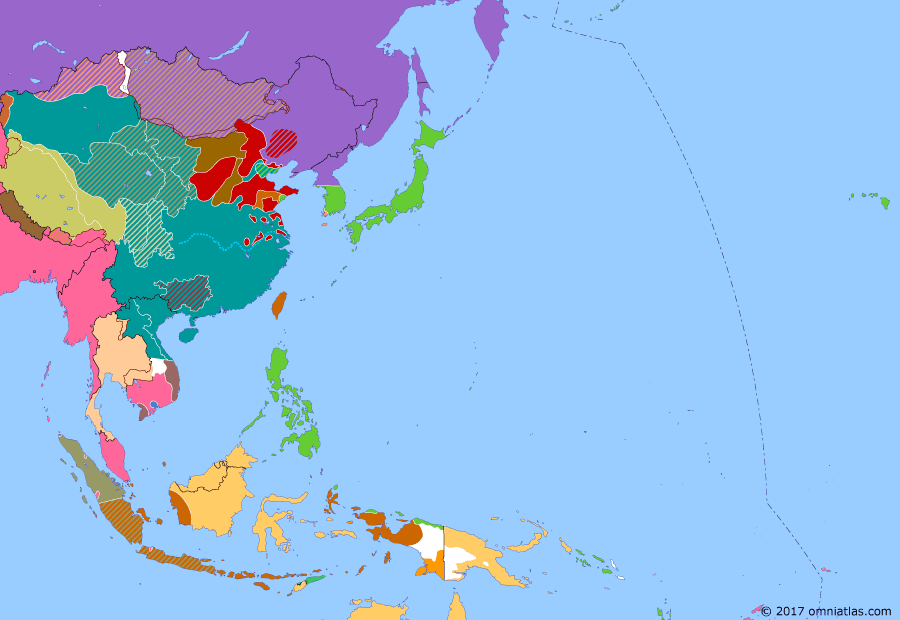Asia Pacific 1945: Surrender of Japan's Overseas Forces

11 October 1945
11 Oct 1945
Surrender of Japan's Overseas Forces
2 Sep 1945 Occupation of Japan
11 Oct 1945 Surrender of Japan's Overseas Forces
27 Mar 1946 Reclaiming China
4 Aug 1947 Indonesian War of Independence
23 Jan 1949 Communist Victory in Northern China
1 Oct 1949 People's Republic of China
29 Dec 1949 Nationalist Taiwan
At the time of the Japanese surrender, Japan still had some 4 million troops stationed abroad. Over the following months, the Allies accepted the surrender of these forces, although they were dependent on them to maintain order for many months more. Some Japanese refused to surrender, instead joining the independence movements sprouting up across their former empire, most notably in French Indochina and the Dutch East Indies.